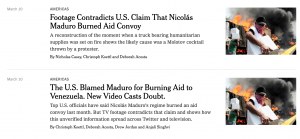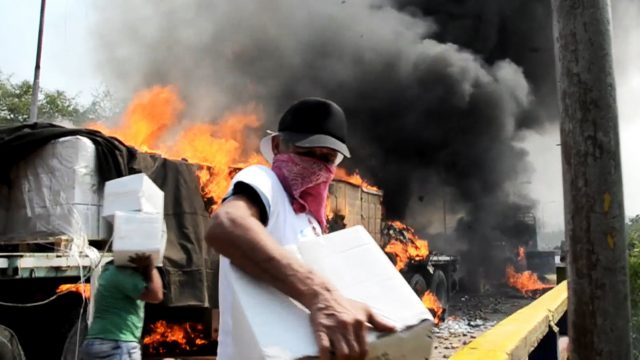When outlining my research plans for the summer, I intended to first spend time building a theoretical and methodological framework for my paper before beginning the more extensive research. Now, as I’ve gotten more of a grasp on how I want to position my paper within certain fields of research and theory, I feel ready to focus more on independent research and archival work. My research project examines American media narratives on US intervention abroad, using coverage of the 1989 Panama invasion and current coverage of US-Venezuela relations as case studies. Because my project focuses on a comparison between media reporting on two different events/time periods, I have been thinking of how my research will differ for each, and how to approach the differences and incorporate them into the broader analysis. The central aspect of my research is to look closely at how and in what ways American news build narratives on U.S. foreign policy and intervention abroad, whether these are narratives of justifying and building support for intervention, or critiquing it, and how the dominant narrative conveyed through media relates to American political and cultural landscapes. US relations to both Panama and Venezuela are deeply connected to the United States’ economic and geopolitical interests, through Venezuela’s oil reserves and access to the Panama canal. In addition to these material interests, both have symbolic significance for political discourses in the American homeland, fitting into the ‘war on drugs’ (for Panama) and the resurgence in American anti-communism (for Venezuela).
Since my research is split into two parts, one focusing on the past and one on the present, I want to make the fact that I’m able to view the coverage from before, during and after the invasion of Panama more central to my paper. It will be useful to chart whether there was a significant comprehensive change in the dominant framing of the Panama invasion before and after it happened. Just in the research I’ve conducted so far, which has mainly involved going through the New York Times online archives, I’ve seen inconsistencies and uncertainties on the civilian death toll, which changes multiple times during the invasion and in the months after. Although I don’t want to draw any major conclusions yet, since I feel that I’m still in the beginning of my research, I’ve noticed that at least for the NYT, there was to some extent at least, wariness of the results of a major, overt U.S. intervention or invasion, and what it would mean for ‘principles of nonintervention.’ However, as it comes to Venezuela today, the regard for principles of nonintervention seem to have almost entirely disappeared, as most NYT pieces on Venezuela hint towards or openly endorse intervention. Noticing this, I realized I wanted to focus on in part how the Panama invasion may have set the stage for the new model of US intervention abroad, done under the banner of “humanitarian aid” which has been replicated in all across the MENA region and Latin America, and now focused on Venezuela. In a NYT piece published during the invasion in December 1989, the author writes, “But if the U.S. plays its cards right, it can justify the invasion. Things have changed. On human rights matters, it is now an accepted practice to intervene in another’s country’s affairs.” Thinking of this, I want to incorporate how the Panama invasion and potential U.S. action in Venezuela are not two separate examples of U.S. military intervention, but intertwined events, one of which influences the way intervention is spoken about today.


